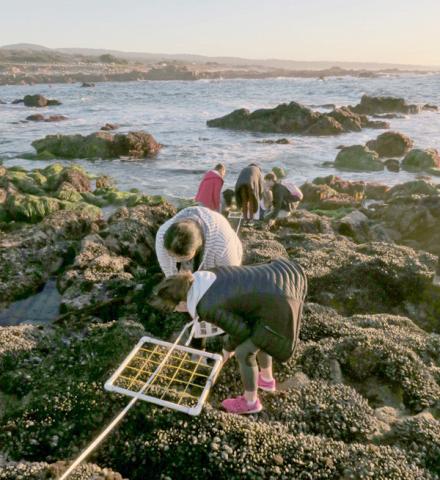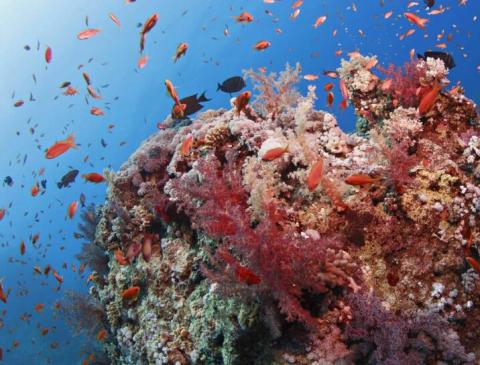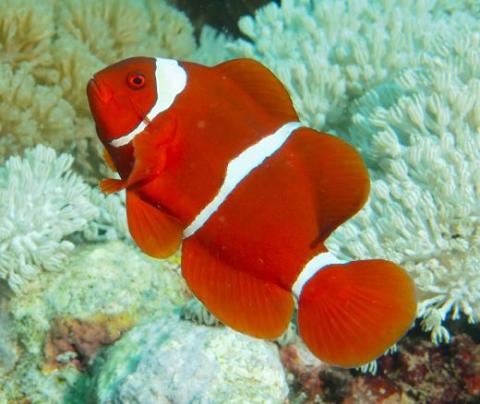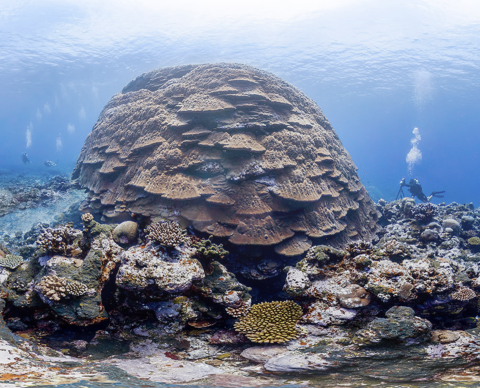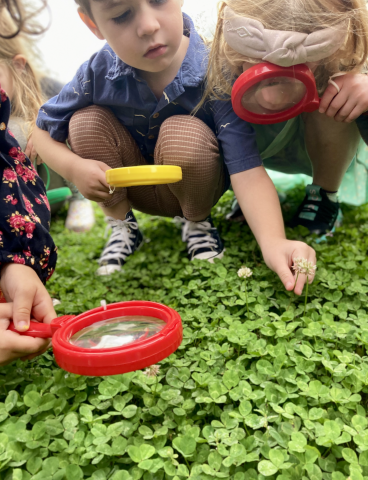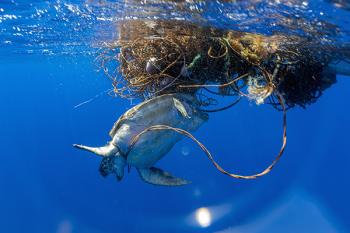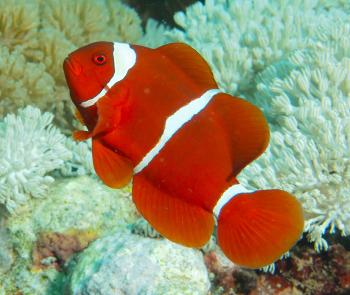Coral reefs are suffering from excessive heat and carbon dioxide in the ocean in two main ways: coral bleaching and ocean acidification. Watch this video about how the climate crisis is affecting coral reefs in a couple of ways.
Coral Bleaching
When the ocean is too warm for the symbiotic algae that live in coral tissues, they leave the corals or die – a process called bleaching. The frequency of coral bleaching is increasing. In the past, coral reefs bleached every 25 to 30 years. The Great Barrier Reef (GBR), one of the earth’s most precious habitats, lost half of its coral populations in the last quarter-century; almost every coral species had declined. By early 2018, the GBR alone had bleached four times since 1998; the bleaching of the GBR in 2016 and 2017, for instance, killed around 50% of its corals. The GBR bleached in 2020 and again in spring of 2022.
Some coral reefs are keeping pace with ocean warming.
Some coral reefs can recover from bleaching if there’s enough time between bleaching events. And scientists have found that some recover more quickly than others, for example those around Palmyra Island. It turns out the coral can make alliances with several different kinds of algae, and what the scientists are finding is that after bleaching sometimes a different species of algae will colonize the coral. And some of those species actually have higher thermal tolerances, so they can remain in the coral under hotter conditions.
Surviving corals from past ocean heatwaves may be more tolerant. The authors of this study suspect that heat-tolerant offspring from the surviving corals are repopulating the reefs, allowing the community to keep pace with warming seas, at least for the time being. And scientists have studied heat tolerance in Florida’s staghorn corals.
But if corals can’t adapt quickly enough, “we could be looking at the effective loss of most of the world’s coral reefs,” said Mark Eakin, an oceanographer who is coordinator of the Coral Reef Watch project at the United States National Oceanographic and Atmospheric Administration that looks at loss of world's coral reefs.
You can see images of healthy and unhealthy reefs here.
Ocean Acidification affects coral reefs by making it harder for corals to build their skeletons and by weakening the coral skeleton. Learn more about Ocean Acidification.
Solutions
People can help coral reefs by reducing their carbon footprint even if you live far from reefs. In the United States and around the world there is an effort to reduce local stressors on reefs so they can better withstand the global climate changes.
Scientists are experimenting with helping corals to recover using those corals that have the best natural chances of survival. In some places people are coral farming — a process whereby fragments of corals are collected from the local reefs, raised in nurseries on land until mature, and then installed at a site targeted for restoration. Read about one of our Featured Scientists who is doing this in Costa Rica. Researchers are using genetics to grow the most resilient corals to outplant on reefs. And scientists doing coral farming are feeding them microbiome supplements to help them grow stronger and survive long after the probiotic supplements have stopped.
This is a good explainer about corals and the climate crisis.
